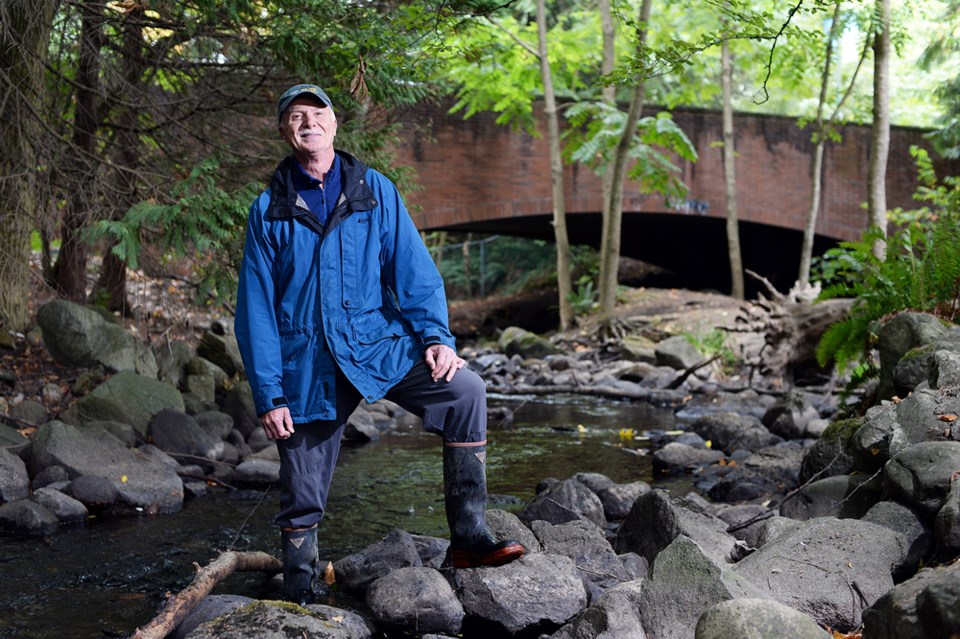Running a pipeline through the Brunette River Conservation Area will undo some of the decades-long work streamkeepers have done to restore Burnaby’s waterways.
That’s according to Mark Angelo, former chair of the BCIT Rivers Institute, who spoke at the National Energy Board’s oral hearings this week. He was part of the City of Burnaby’s panel of witnesses.
The meetings were part of the NEB’s regulatory process and will determine the exact location of Kinder Morgan’s Trans Mountain pipeline route within the approved corridor. They give the energy regulator an opportunity to hear from affected landowners, like the City of Burnaby, who have issues with the route.
“In recent decades, we have made immense progress in Burnaby in terms of healing our waterways and protecting key natural spaces,” Angelo told the board, noting it’s one of the “most compelling” river restoration stories in Canada. “But to now build a pipeline across the Brunette River Conservation Area utilizing an open-cut methodology to cross streams – that will most certainly detract from that.”
He talked about how during the city’s early years of “unbridled development,” streams and creeks were devoid of fish. Angelo gave the example of the Brunette River, which was “severely damaged” by railway construction in the early 1900s and was polluted from a mix of industrial run-off and sewage.
Today, it’s a different story. The river and its surrounding creeks are home to chum and coho salmon as well as the endangered Nooksack Dace.
“We’ve had some very significant success in rebuilding and restoring salmon stocks,” said Angelo, pointing to the major return of chum salmon to Still Creek in 2012.
According to the local streemkeeper, the open-cut method for construction will physically disrupt and damage both riparian and in-stream habitat within Lost Creek and Holmes Creek.
“It’s concerning that Trans Mountain has opted not to utilize trenchless directional drilling methodologies, which I believe should be used when crossing sensitive stream environments. They are less disruptive and less invasive,” he said.
According to Trans Mountain witness Randy Brake, the company initially proposed to use horizontal directional drilling (HDD) in the Brunette River Conservation Area.
“We didn’t feel that we had the space in certain areas to be able to do traditional pipeline construction,” he said. “Once we got into detailed design and we got into our construction planning, we realized that we were able to do traditional open trench.”
HDD also carries some risk, according to Brake, including failure during the initial bore and during the pullback of the pipe. He said the company limits HDD construction as much as possible and only uses it where “absolutely necessary.”
Michael Davies, vice-president of operations for Kinder Morgan Canada, said when the proposed route didn’t align with the existing pipeline, the company tried to follow existing infrastructure. With the Brunette section of the route, it follows the CN-BNSF railway line. (BNSF Railways owns the land within the Brunette Conservation Area.)
According to Jim Wolf, a senior long range planner with the City of Burnaby, the city designated the lands as park/conservation in 1990 as part of the Cariboo Heights Community Plan.
Council also directed staff to add the land to its parkland acquisition program and to write to BNSF to inquire regarding the city's interest in purchasing the lands.
“This was done and to date the company has not indicated its interest in selling the lands,” he wrote in an email to the NOW. “However, the area was designated in the official community plan in 2014 under the park and recreation land use designation and remains in the parkland acquisition program.”



